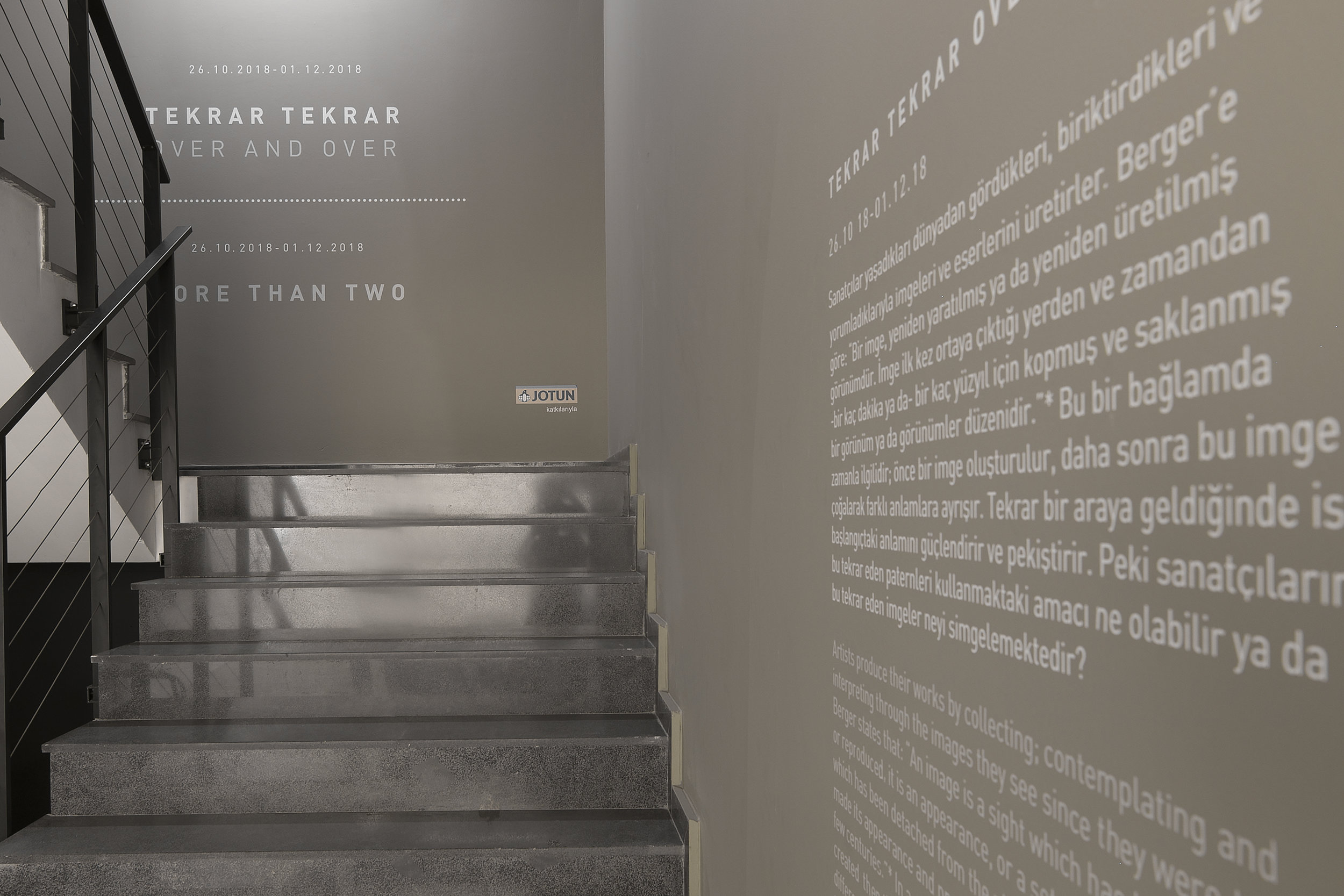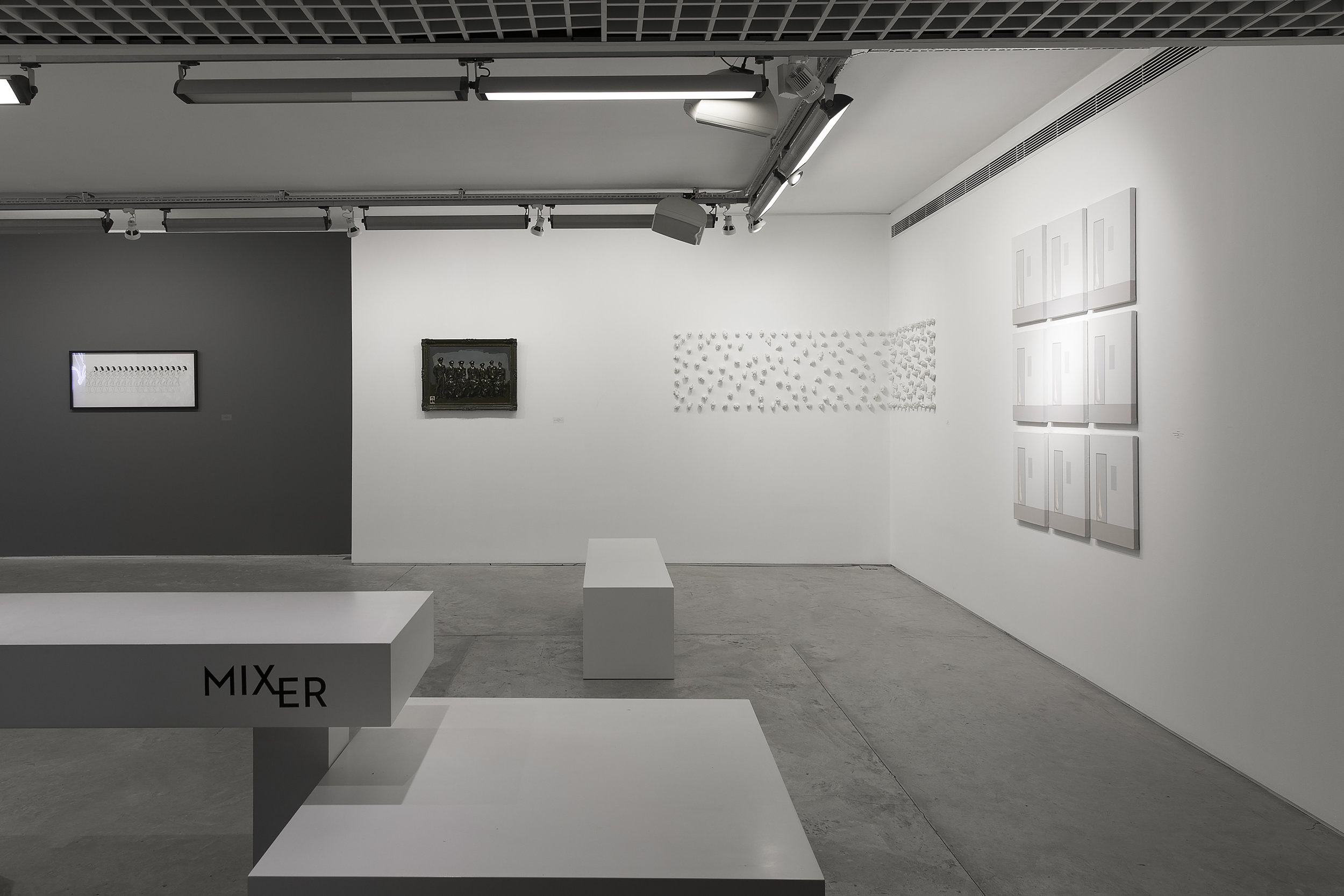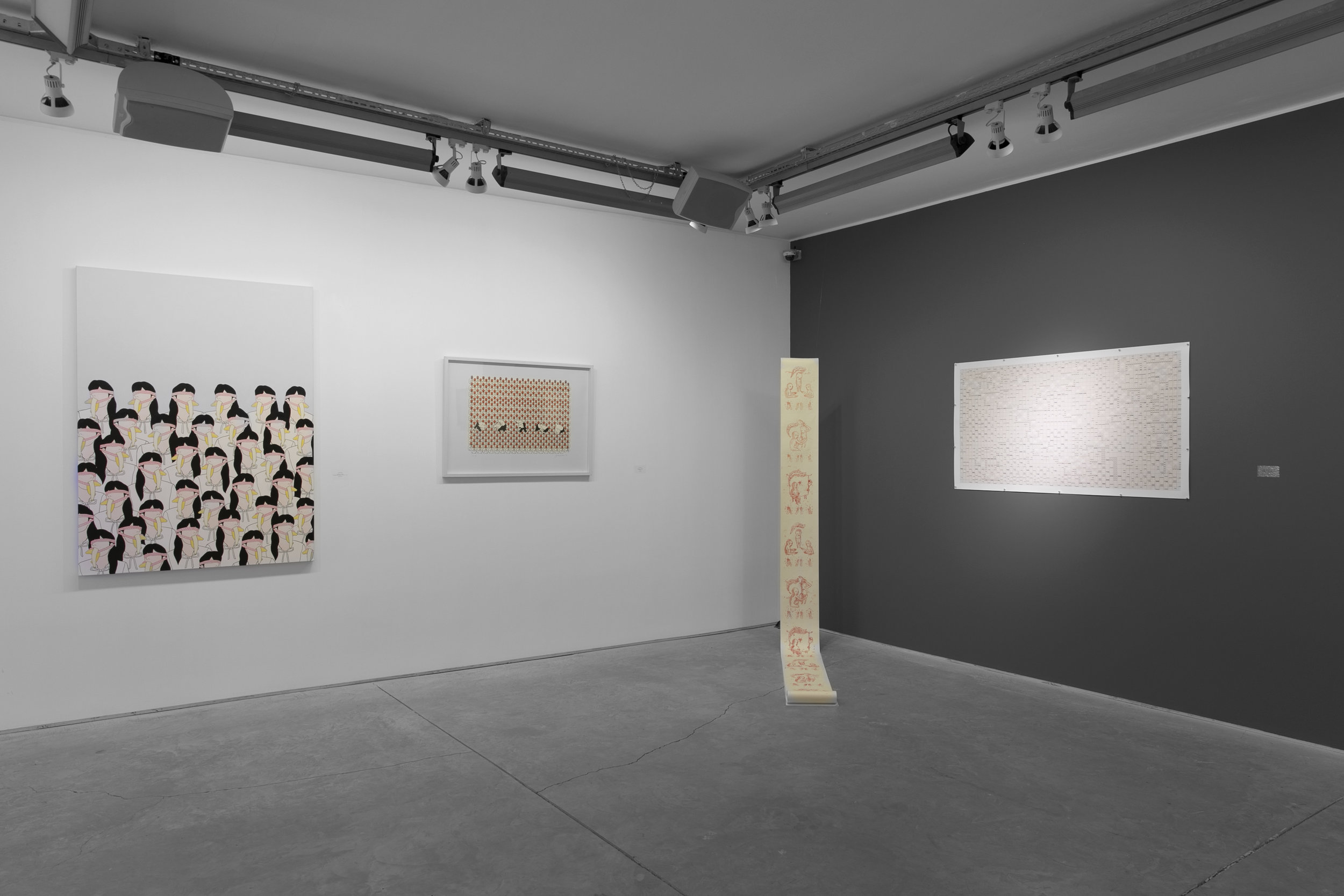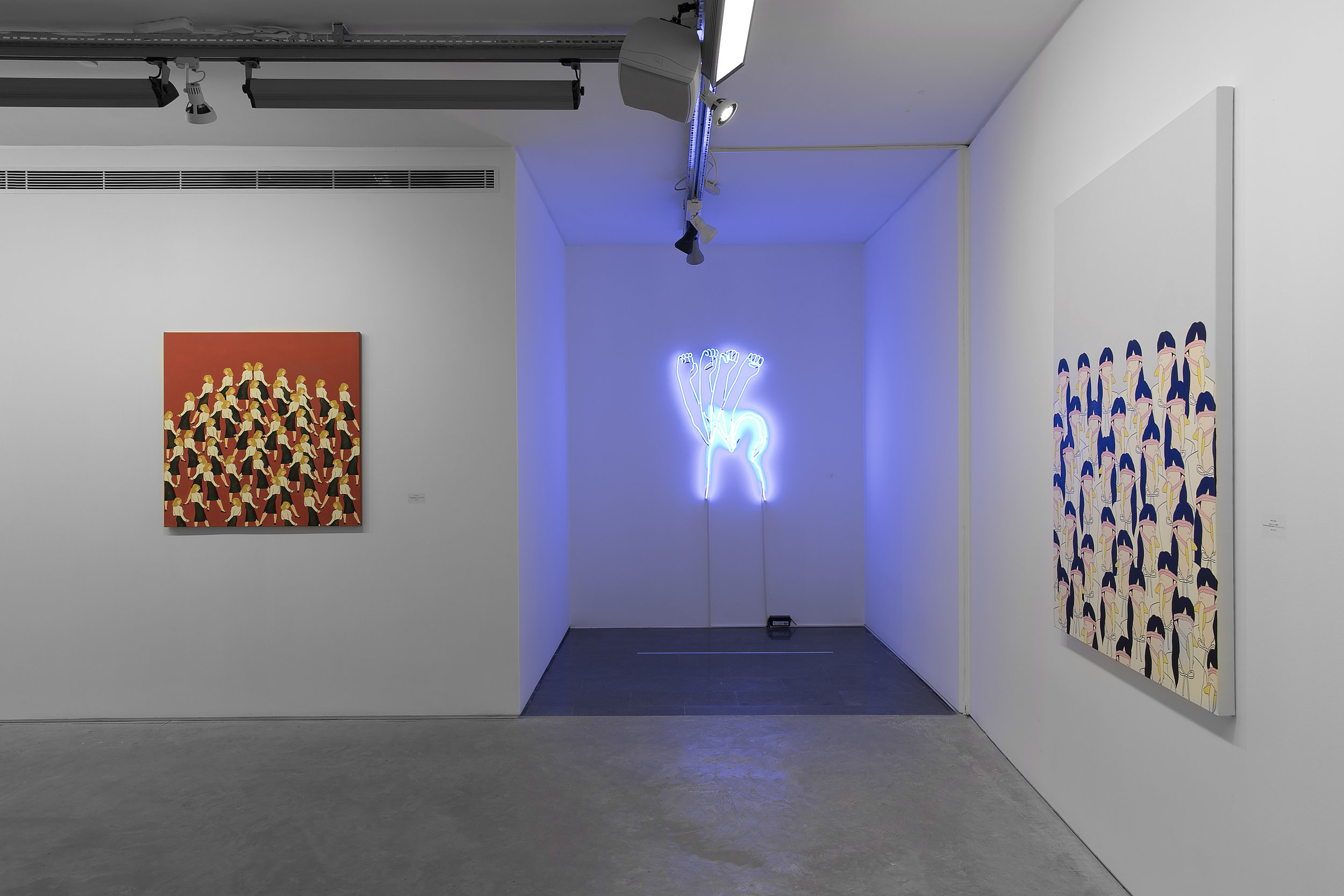Over And Over
26.10. 2018 - 01.12.2018
Artists:
Ahu Akgün, Ali Sentürk, Gamze Tasdan, Egemen Tuncer, Ihsan Oturmak, Meltem Sahin, Hamza Kirbas, Serdar Acar, Sibel Kocakaya
Berger states that: “An image is a sight which has been recreated or reproduced, it is an appearance, or a set of appearances, which has been detached from the place and time in which it first made its appearance and preserved - for a few moments or a few centuries.”*
Artists produce their works by collecting, contemplating and interpreting the images they see from the time that they were born. Occasionally, they create various compositions by augmenting images - either to reinforce the meanings of the subjects they work on, or to conceal its meaning. For example, in societies where the images are part of the religious practice, god symbols or holy scriptures are depicted in repetition. One of the purposes here is to emphasize the 'sacred' and to strengthen its image. When one considers works from the Renaissance and Baroque periods, it is possible to observe repetition in that the artists produce the same work over and over again, which could be considered more for the purpose of practicing and taming. The avant-garde artists, who followed them, do not see any harm in using the same motif repeatedly in the same or in other works. The use of repetitive images and patterns is particularly striking within the Art Nouveau movement. It is also common to have these kinds of repetition of music and poetry. In a way, it is related to time; first an image is created, then this image is multiplied and separated into several different meanings. When these images come together again, it strengthens and reinforces the meaning of the original meaning. What might be the purpose of using these repeating patterns for contemporary artists, or what do these repetitive images symbolize?
The ‘Over and Over’ exhibition seeks to lead us to the meditative sorcery and rhythm of repetitive images whilst questioning artists' probes.
In the exhibition, Ahu Akgün prepares an installation consisting of hundreds of small human head sculptures produced from plaster. This work, named "The Faces" by the artist, represents the crowd that we see every day, and that we are a part of. The artist, who examines all these faces individually during the production phase and afterwards, aims to touch, recognize, acknowledge, accept and feel those individual sculptures by touching, and in doing so, to convey this feeling to the audience. Ali Şentürk, who has been influenced by Roy Anderson's cinematic acumen in his recent designs that are increasingly simplified, does not aim to visualize the multiplicity or complexity of the repetition of figure. His aim is to search, find, and dig into memory again and again, as it is an archaeological excavation of particular figures in the crowds. This is a personal obsession and a ritual. In "Do not Look Back", Gamze Taşdan combines gender and tradition issues, which are generally emphasized in the practice of art, with popular aesthetic language. The image of "hand-gunned woman", which is often used in Yeşilçam or in a fantasy setting in Hollywood cinema or in a romantic scene, has a different meaning in today's ambience. The weapons that men acquire just for pleasure during the time where even the state is insufficient to protect the people, are transformed into a tool that women use to protect and defend themselves against men. Egemen Tuncer’s work in the exhibition was aiming to revive the ceramic wall that was designed by Sadi Diren for the Atatürk Cultural Center in 1971. The design has disappeared with the demolition of the historical building this year. The artist brings together each and every piece of this design as a historical site with cultural heritage value, reconstructs it through drawings and plans. Ihsan Oturmak refers to the concept of uniformification in his work that he produced as a reference to a military service memory photograph. The soldier, who is the main character of the photograph, cannot be distinguished from other soldiers wearing the same uniform. By abstractly placing the face of that soldier in the lower left corner of the painting, he stresses over this concept. Meltem Şahin, with the help of animations and illustrations, conceptually focuses on human psychology and philosophy. She carries the moods of her figures into drawings and then moving images. These figures in repetitive motion turn into a transformation process and a loop. Hamza Kırbaş creates a set of words and phrases using the Gestuno (international sign language) alphabet in his three-dimensional neon series. His work named 'Come' aims to establish an international communication using the power of its meaning and the way it is expressed. Sibel Kocakaya, who uses photography, video and painting as her main mediums, questions the relationship between space and body with a distinctive monochrome palette.
*BERGER; John, Görme Biçimleri, Metis Yayıncılık, İstanbul, 2006.
*KUNAK, Göksu, Hem İç Hem Dış Hem Parça Hem Tekrar, e-skop, 2013.





